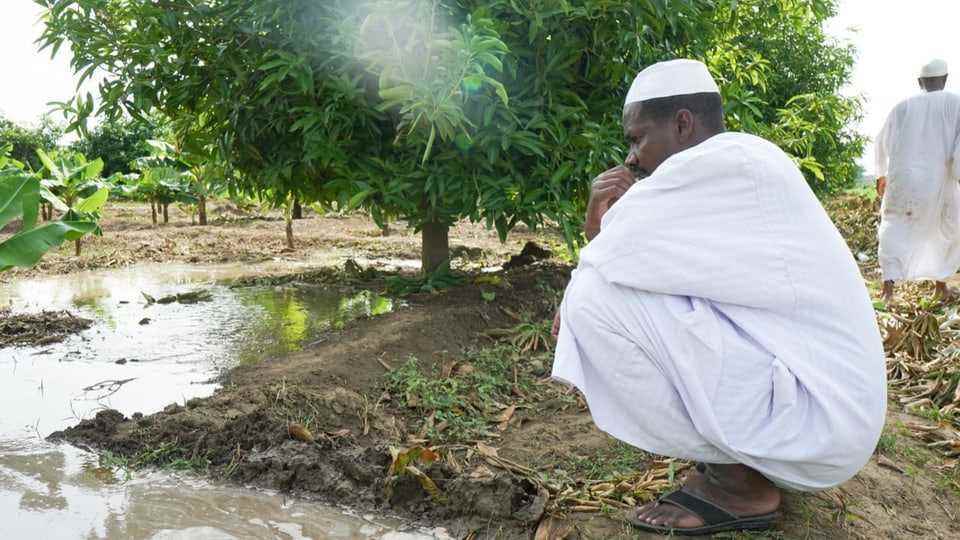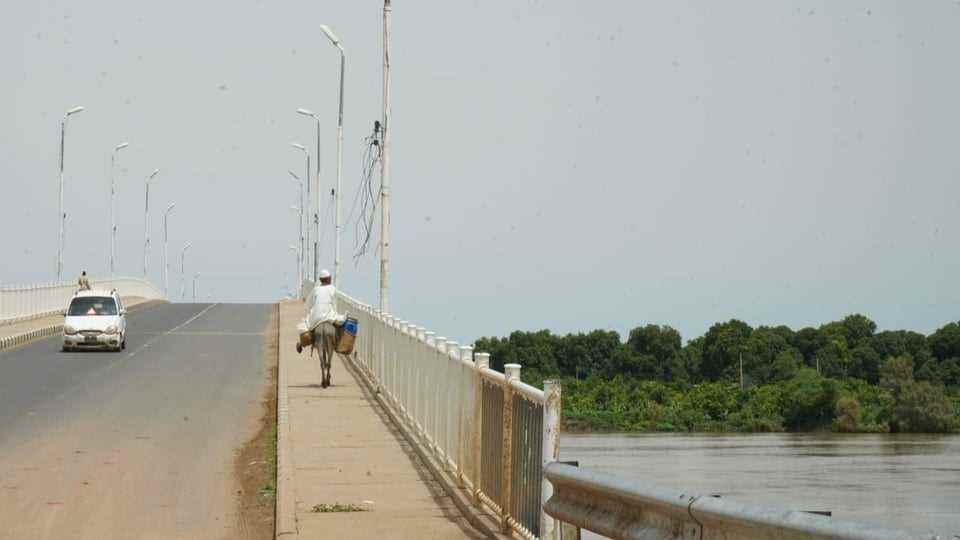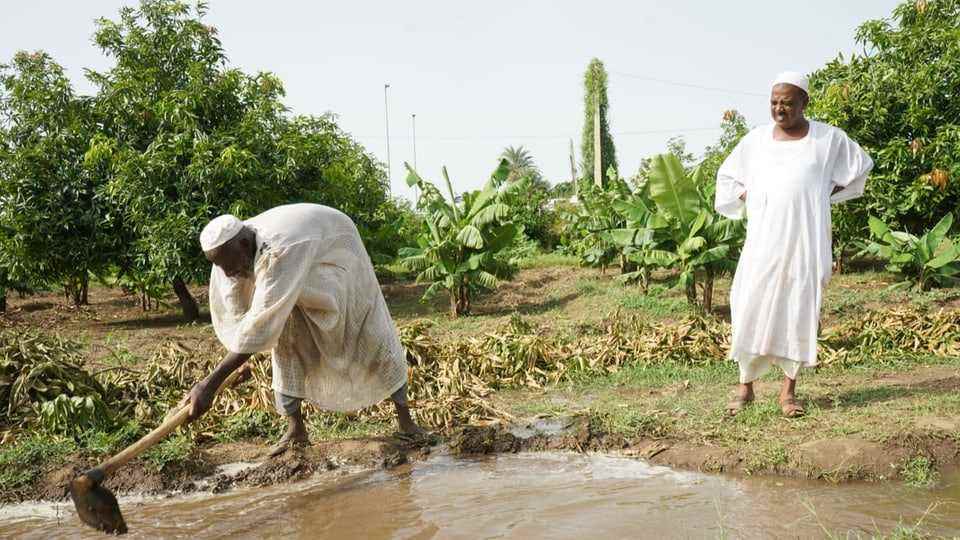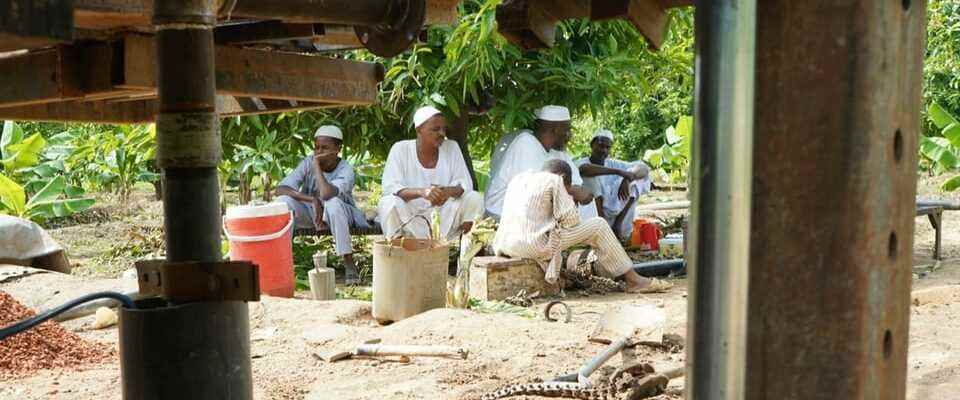contents
Ethiopia put its new dam on the Blue Nile into operation at the end of February. A milestone for the country. The Nile states on the lower reaches – Sudan and Egypt – fears arise: Their agriculture is dependent on the Nile water. But Ethiopia refuses to be talked to.
First there is coffee – as is so often the case in Sudan. A group of farmers sit in the shade of a mango tree. Older men in long white robes. The Blue Nile passes just a few meters away. Ethiopia’s dam on the upper reaches of the river is a constant issue among farmers. The water is their livelihood.
Legend:
While groundwater is being drilled in front, the Nile farmers in the background are discussing the water supply. The Ethiopian dam worries them.
Samuel Burri/SRF
Actually, there is no work on Friday in Sudan. But today it’s different – because farmer Ali Elsadiq has ordered a truck with a drilling rig. This will allow him to tap into the groundwater in the future.
Married to the Nile
Discussions and concerns are omnipresent. One is practically married to the river, explains farmer Adam Zahir: “It’s more than a marriage, we spend our whole lives here, up to 15 hours a day. With the trees and cows.”
Divorce, on the other hand, is not possible. You can change the woman, but not the river, says Zahir. Laughter erupts on a serious subject.
An unpredictable lifeline
Two-thirds of Sudan’s irrigated agriculture is here on the Blue Nile. Onions, tomatoes, okra grow in the fields near the town of Wad Madani. In between mangoes, bananas and oranges, in the flat hinterland millet and sesame also thrive.
Ethiopia’s new dam is also causing sleepless nights for farmer Ali Elsadiq: “Of course I’m scared, because if the amount of water decreases, it will affect us all.” Hence the new borehole. The final preparations for starting the pump are underway. So Sadiq could also irrigate when the Nile is low in water.

Legend:
Nile farmer Ali Elsadiq is worried: he had a hole drilled down to the groundwater – he wants to be prepared in case the Nile dries up.
Samuel Burri/SRF
In addition to pump irrigation, the main focus in Sudan is on the annually recurring natural floods. But then whole areas are flooded. The flood is both a curse and a blessing. Farmer Zahir explains that a friend of his lost 2,500 lemon trees in the last flood. At the same time, the sediments in the water make the land fertile.

Legend:
At 6,670 kilometers, the Nile is the longest river in the world – with its floods it is unpredictable.
Samuel Burri/SRF
The Blue Nile has always been unpredictable. With the new dam in Ethiopia, this unpredictability could increase – fears on the lower reaches. That is why Sudan and Egypt are demanding a binding agreement with Ethiopia on the use of Nile water. But Ethiopia doesn’t want to.
Late in the afternoon, Elsadiq’s field suddenly starts buzzing. The electric pump has started. Suddenly, water shoots out of the borehole. The old men jump up, pick up their heels. They direct the water into the canal system between the vegetable beds.

Legend:
The Nile farmers direct the water over their fields with a canal system.
Samuel Burri/SRF
The men in their white robes open a sluice here and close another. Now they still work on Fridays. And the coffee under the mango tree is getting cold.
